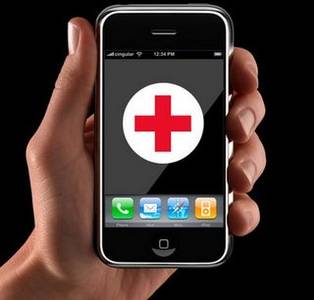The other day I came across a new term in the feminist journal Hecate – ‘milkmother’, a term invented and used by Pamela Douglas (2010). Douglas uses ‘milkmother’ to ‘denote the pregnant, birthing, and physiologically, or metaphorically lactating woman’. She argues that ‘lactating’ not only incorporates its literal meaning — secreting breast milk for the consumption of an infant — but also a metaphorical meaning — ‘offering the particular minute-by-minute physical nurturance that very young children require, regardless of feeding method’. Lactating in this metaphorical meaning, therefore, involves the giving of the self to one’s child in the myriad of ways that is demanded of mothers: touching, cleaning, holding, cuddling, stroking, feeding, dealing with illness, rocking to sleep, constantly thinking about and meeting the child’s needs.
The concept of the milkmother for me encapsulates the blurring of the boundaries of the body/self a woman experiences during pregnancy, childbirth and caring for infants and young children (Lupton 2012). As I noted in an earlier post ‘Pregnancy and loss of control’, pregnant bodies are considered permeable and uncontained. So too, for women engaging in caring for their infants and young children, their bodies/selves become intertwined with those of their children. This involves what sociologists of the body describe as ‘intercorporeality’, or the blurring of boundaries between bodies. Milkmothers find themselves as embodied subjects, thinking through and with their bodies as they interact with their children. Their sense of self becomes intersubjective, or linked to that of another/s. No longer autonomous and individuated, milkmothers respond to their children in relational and interdependent ways.
This blurring of subjectivity and bodies, however, can be confronting. Some women experience pregnant embodiment as confronting in its two-bodies-in-one state, and feel as if their own body is being ‘taken over’ by the preborn body. They even describe pregnancy as like being occupied by an alien Other. Many women feel challenged by the demands made upon them by their infants and young children. These feelings are articulated when women discuss their embodied relationship with the breastfeeding infant. Many find the intercorporeality of the experience highly pleasurable and contributing to strong feelings of intimacy and tenderness with the infant. Others find this intercorporeality confronting and engulfing of their own sense of body/self. In one of my articles (Lupton, 2000) I referred to the ‘love-hate’ relationship some women talked about in interviews about their early mothering experiences. They had invested in the ideal of the ‘good mother’ as always ‘being there’ for her children, but also found this to be difficult to live up to.
My research suggests that the experience of motherhood, at least during the period of infancy and early childhood, may never fully include a strong sense of individuation from one’s child’s body (see Lupton 2012). Nor does this process necessarily follow a clear trajectory: mothers may move between states of interconnectedness, at times feeling very close and ‘at one’ with their foetus/infant, at other times experiencing their bodies/selves as very separate from, and even in conflict with, the infant body/self.
Being a milkmother clashes with the independent, autonomous self that is so valued in post-femininist western societies. It also conflicts with the ‘Yummy Mummy’ persona that Douglas discusses in her article. The ‘Yummy Mummy’ appears to be supremely untroubled by any bodily or emotional effects of caring for her children and expresses the same autonomous self of those without children. Her body is slim, fit and attractive, not leaking fluids such as breast milk or rendered flabby from excess weight put on during pregnancy. Unlike the ‘milkmother’, therefore, this maternal archetype appears to be able to contain and discipline her body, and to individuate her sense of self and embodiment from her children. She appears serenely unchanged by the enormous physical and emotional alterations caused by pregnancy, childbirth and motherhood.
Douglas calls for more positive representations of the milkmother that goes beyond the unrealistic ‘Yummy Mummy’ persona. The emotional and bodily experiences of mothers of infants and young children, she asserts, need to be recognised and celebrated but not airbrushed. The blurring of bodily boundaries, the heightened emotions of the caring experience (including the frustration, anger and even hate that women may feel at times towards their children) and the physical changes, both reversible and irreversible, wrought by motherhood — all these should be acknowledged and accepted as integral to the experience of early motherhood.
References
Douglas, P. (2010) Yummy mummy and the medicalised milkmother. Hecate, 36(1/2), 119–35.
Lupton, D. (2000) ‘A love/hate relationship’: the ideals and experiences of first-time mothers. Journal of Sociology, 36(1), 50–63.
Lupton, D. (2012) Configuring Maternal, Preborn and Infant Embodiment. Sydney Health & Society Group Working Paper No. 2. Sydney: Sydney Health & Society Group. Available here.









